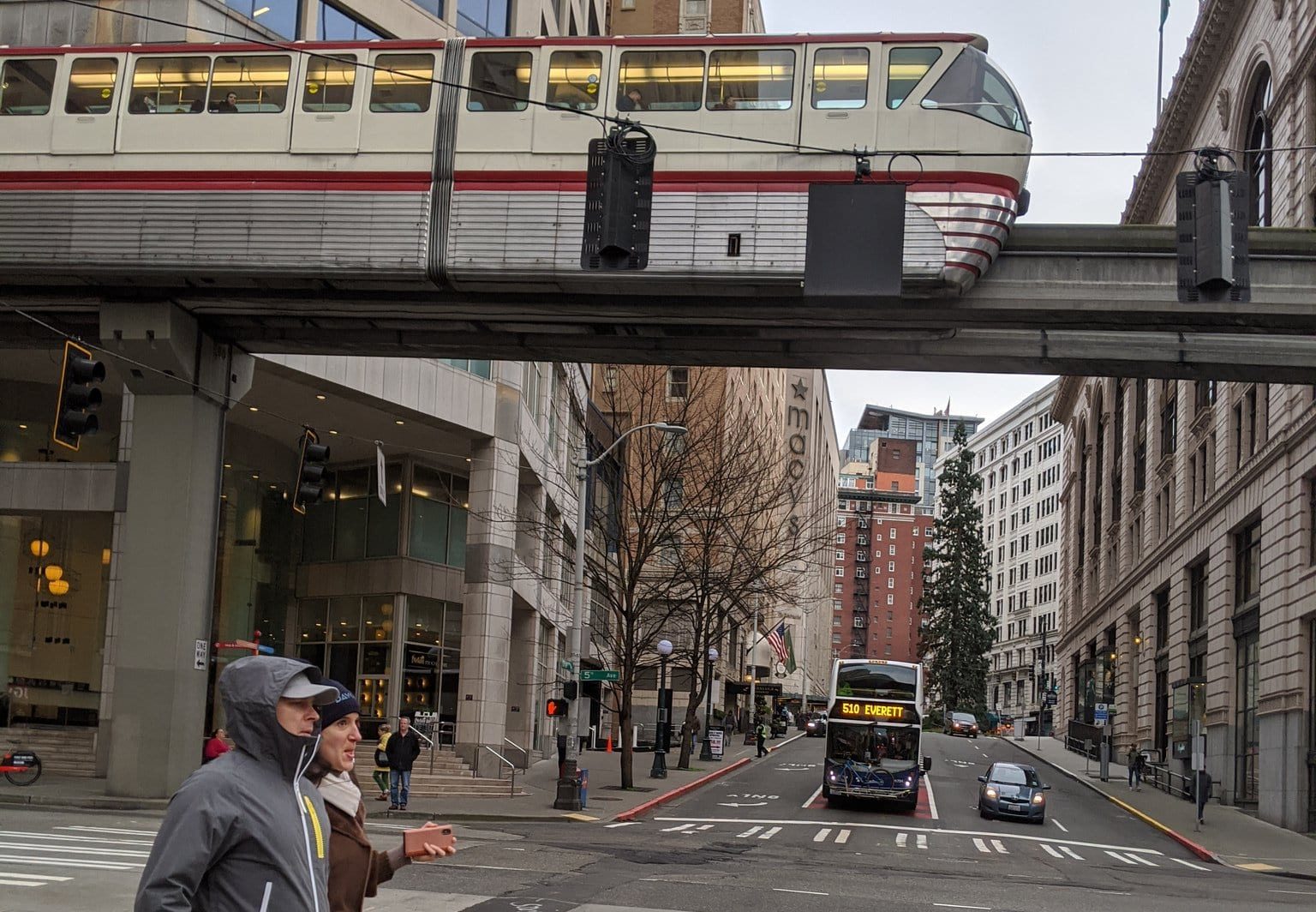 Light traffic on Olive Way on March 3. Photo by Dongho Chang
Light traffic on Olive Way on March 3. Photo by Dongho Chang Seattle, King County, and the State of Washington are taking strong measures to protect the health of residents amid the rapidly developing COVID-19 outbreak.
The Governor’s March 11 announcement places a ban on gatherings of more than 250 people and March 12 announcement closed K-12 schools in King, Snohomish, and Pierce counties until April 26.
With many downtown employees now teleworking from home, we’re beginning to see lower traffic volumes around the city.
This week, traffic volumes on Seattle streets are more than 20% below normal levels in and out of the downtown area.
Washington Department of Transportation (WSDOT) is seeing similar trends on I-5, SR 520, and in the SR 99 tunnel.
These changes in traffic volumes suggest that people are following Public Health Seattle King County’s social distancing recommendations and employers are encouraging employees to work remotely to help slow the spread of COVID-19.
We know that not all jobs are conducive to teleworking. We greatly appreciate the contributions of people who continue showing up daily to keep our city and community running during this uncertain time.
Many of us are getting used to our new home offices, but teleworking has been on the rise in Seattle over the past decade.
Commute Seattle recently released their biennial Center City Mode Split Survey that looks at how commuters get to and from downtown Seattle during rush hours.

Telework increased 113% from 2010 to 2019.

The biggest jump in teleworking occurred between 2017 and 2019 – the same time the #SeattleSqueeze constrained the way people moved through downtown.
To help ease the impacts of the Seattle Squeeze, we worked with Commute Seattle and local transit agencies to promote reducing drive-alone car trips.
The survey results show that nearly a quarter of downtown commuters changed the way they got to work last year.
37% of those respondents took transit more often while 29% teleworked or shifted their schedule to avoid peak congestion downtown.
The City of Seattle took our own advice and set up a new Alternative Work Agreement program where many employees could alter their schedule to work remotely one day a week.
The telework systems we set in place last year for the Seattle Squeeze are making it easier for the City to transition to remote work during the COVID-19 outbreak.
This is a challenging time for everyone in our city.
We will get through this together. Don’t panic, remember to wash your hands often, and cover your nose and mouth when you cough or sneeze.